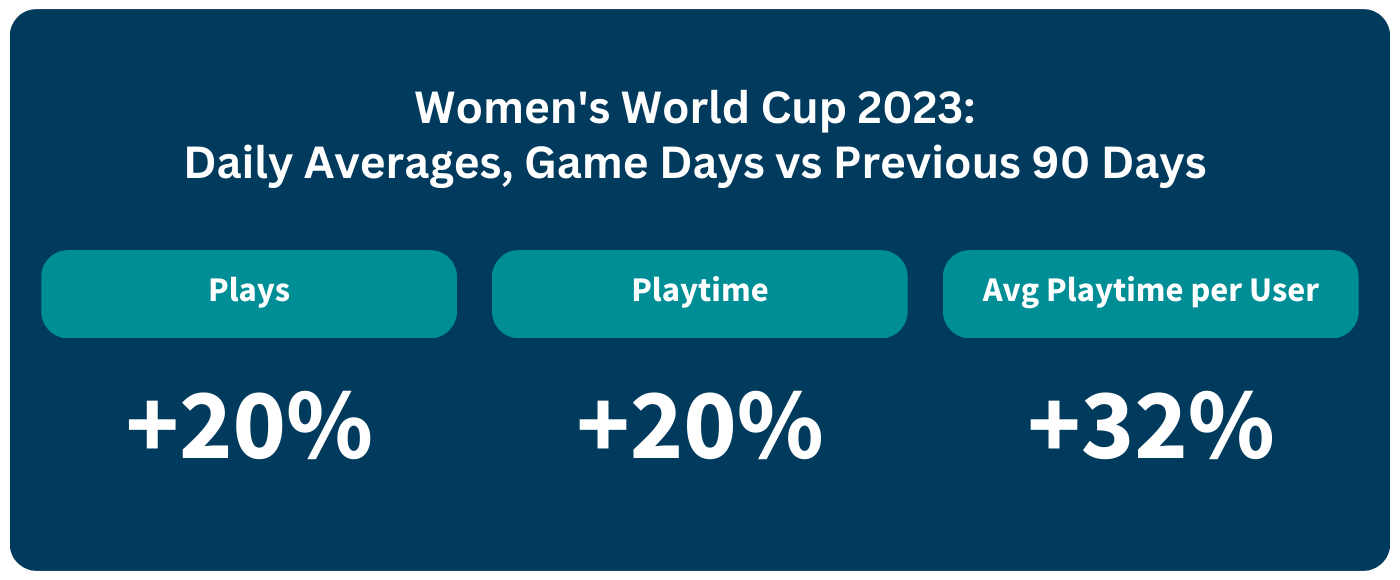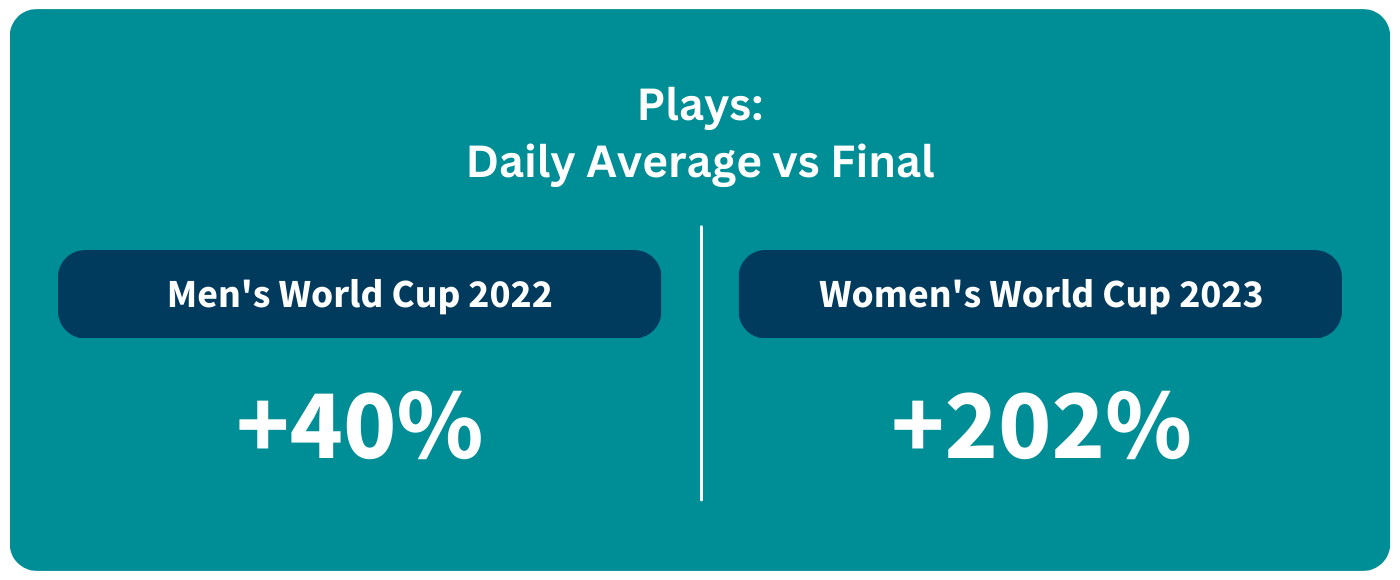Following a historic Women’s World Cup 2023 that set an attendance record and saw Spain join the select group of title-winning nations, we analyzed data from NPAW customers with streaming rights to the Cup to assess the tournament’s performance in terms of streaming viewership. The results of our analysis tell a success story for both women’s football and streaming adoption.
Compared to the average of the 90 days prior to the tournament’s start, total plays and playtime surged by 20% during game days. This spike underscores the interest in the WWC and its potential to boost streaming engagement compared to regular seasonal content. Additionally, the average playtime per user saw an increase of 32%, accompanied by a subtle but noteworthy 5% boost in unique users. Daily playtime for the average user during the WWC neared 59.7 minutes — an average of one hour of football viewing per day.

Examining the various stages of the tournament, the total number of plays during the various WWC rounds followed a relatively stable trend. However, excitement peaked on July 28 during the Argentina vs. South Africa game and, especially, during the grand final match of August 20. The final between England and Spain generated an astonishing number of plays, attracting significant global attention from football fans. In contrast, the third-place match between Sweden and Australia was among the least viewed games.
Though the total number of plays for the Men’s World Cup of 2022 still far outnumbers this year’s Women’s edition, the WWC final saw an impressive 202% increase in plays compared to other games – a statistic that far outstripped the Men’s WC, where the final saw a 40% increase in comparison to other games. This major spike underscores the growing interest in women’s football, which culminated in the riveting final duel between La Roja and the Lionesses.
In terms of the devices used by viewers to stream the WWC, mirroring past sports events, the majority preferred a traditional, big-screen viewing experience. Set-top boxes and TVs combined accounted for 75.2% of total playtime. Albeit far behind, smartphones and PCs, together accounted for a still substantial 22.4%. This suggests that these platforms served as alternatives for fans on the go or when a TV was not available. Tablets and consoles captured only a marginal share of the total playtime.
Overall, what these insights tell us is unequivocal – women’s football is gaining attention and momentum like never before. The WWC has undoubtedly sparked renewed interest and engagement, ushering a new era for the sport and the way it is streamed globally.


